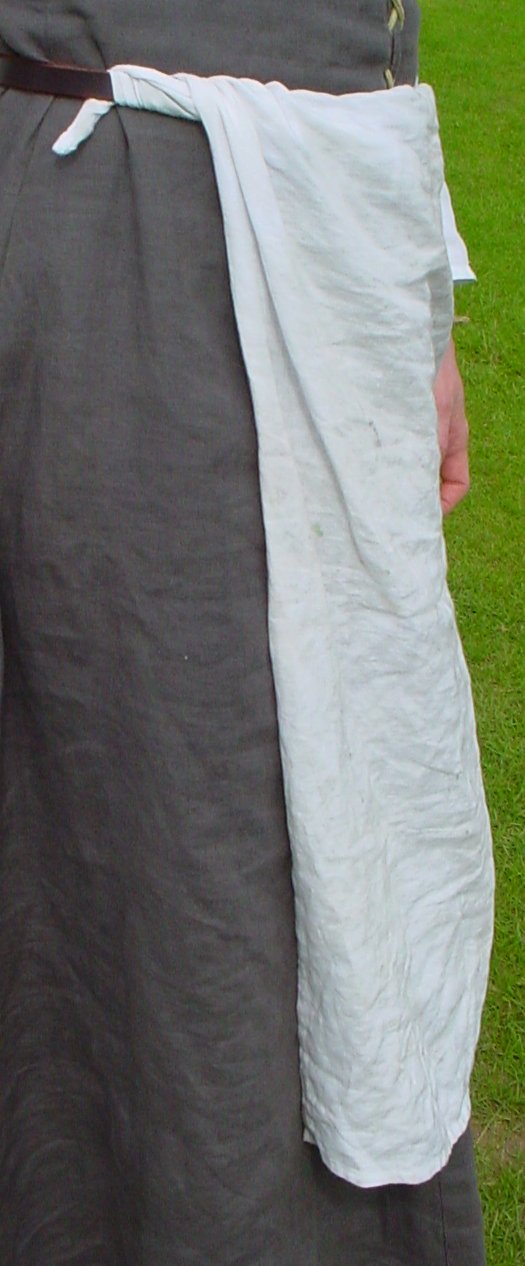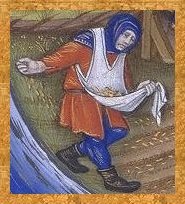Aprons
These offer protection when doing messy or dangerous work, such as cooking, smithing etc. No apron is complete until it's been burnt at least once! The basic apron is much as you would expect, a rectangle of cloth attached to a waistband which ties round the waist. The aprons tended to the fairly thin only covering the front of the body and are generally unpleated. They are made from heavyweight linen, flax or canvas.

An adaptation to this is an apron with a bib. This was normally triangular in shape and held up by a brooch. Some professions, such as smiths, that deal with fire and hot metal have leather versions of this apron, but most of them are cloth.
Alternatively you could just use an oblong piece of linen tucked into your belt.  I recently found this picture a of a man in an apron
I recently found this picture a of a man in an apron  planting seeds
planting seeds
 I recently found this picture a of a man in an apron
I recently found this picture a of a man in an apron  planting seeds
planting seeds